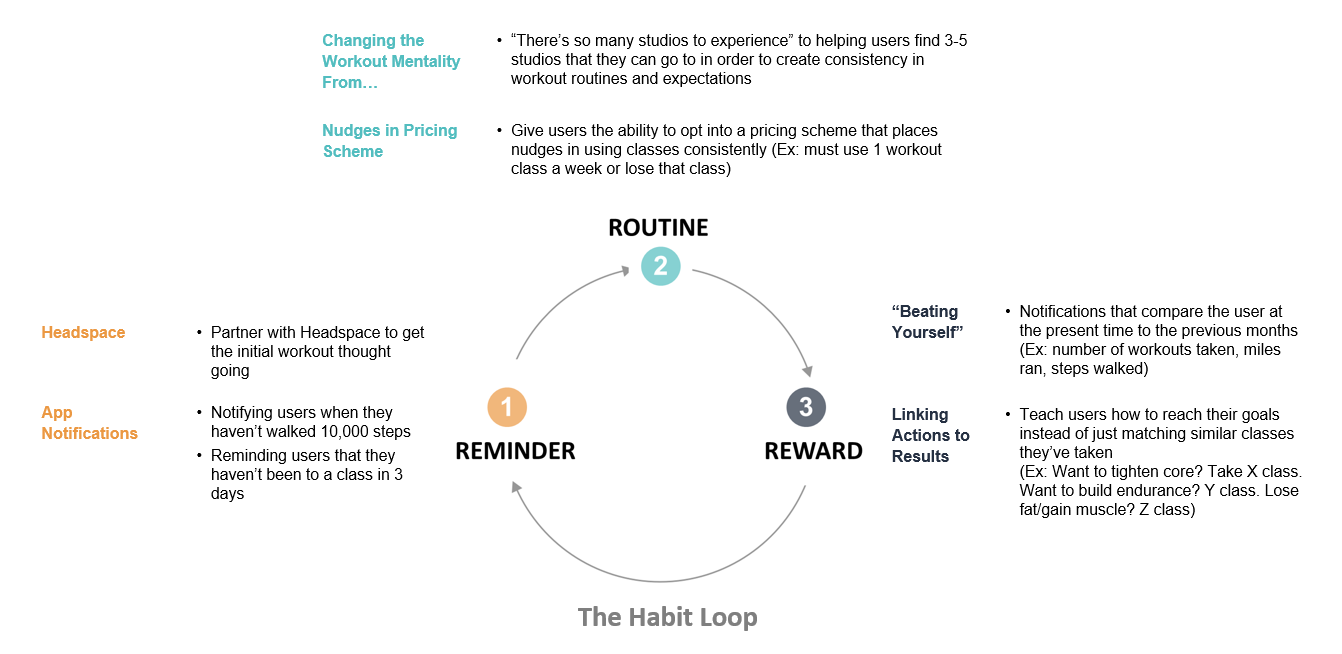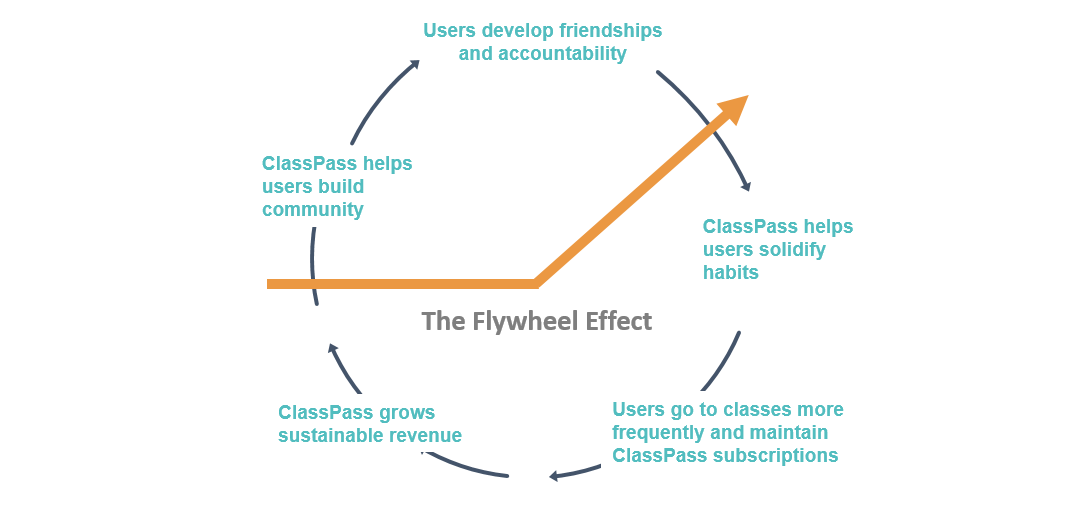Reimagining: How ClassPass Can Create a Habitual Foundation
With a better grasp on how to control its user-activity costs, ClassPass now faces a dilemma in growing and keeping its subscription base in tact. The company has redefined the gym business model, but still faces the nagging question of user revenue sustainability.
In the present perspective, revenue appears to be on a stable trajectory, but many challenges still arise to creating a sustainable future.
Imagine: A 25 year-old female, living in New York City, who highly values health, has an above-average disposable income and spends $350+ a month on fitness classes.This is the holy grail of ClassPass’s target audience. Yet, when given the option to spend $135/month for 10 workout classes using ClassPass, she opts not to. Instead, the majority of her fitness spend comprises of specialized studios and activities that are on average twice as much. (In a perfectly rational society, we would expect the user to maximize her utility with the most economical workout classes first.)
The Problem| It’s Not Just About a Fair Price…
ClassPass’s ideal user falls into the demographic described above. But, there’s a huge gap that may be preventing the company from fully converting its users into brand evangelists that will ultimately drive sustainable reoccurring revenue.
ClassPass can capture more spendable dollars
The company’s value proposition of providing a variety of classes at a fair price has solved a problem for both workout goers and studios. Unfortunately, this has created an unintended consequence for its own business model — attracting the less predictable “wishy-washy” workout goer. You know the type — those that want to see what classes work best for them, but don’t commit to the workout routine and aren’t serious enough to spend an exorbitant amount of money. This type of user presents a problem, as the current fitness market rewards companies who attract workout goers at the extremes (see below).
Reoccurring revenue becomes sustainable at extreme price points due to the nature of subscription types
Looking at the spectrum above, ClassPass is right in the middle. The “gray zone” in which the company lands consists of medium subscription volume, medium price-point, and unpredictable user behavior.
Coming back to our ideal ClassPass user and their irrational economic behaviors, months following their activation, the user seems to lose sight of reasons to keep or upgrade their subscription. Unlike its peers, ClassPass provides no emotional ties or nudges to help their users create a narrative to justify the spend. With no emotional tie to the subscription, the user can easily justify a cancellation.
Emotional ties allow workout goers to justify fitness spend
Remaining Fit in the Fitness Market Space
Left unaltered, ClassPass will continue to serve a middle-market fitness space that is not naturally molded for its business model and will continue to face a uphill climb. To remain fit for this market, the company must compete in these core challenges:
Creating community to encourage workout goers to keep their momentum
Consistent workout experiences within studios and gyms
Supporting users in habit formations
Solution | Creating a Habitual Narrative
As most gym owners would attest to, the best way to attract and retain users is by building community and accountability. In essence, ClassPass has to bridge the gap of being a “gym class” broker to being a creator of an ecosystem.
ClassPass must be synonymous with #TransformationTuesday (or the like) and must use their platform to influence behavior. With its infrastructure ahead of its competition, ClassPass can easily scale and influence user behavior to garner emotional appeal (comparable to its competitors).
Creating an Ecosystem Through:
Building a Community
In today’s day and age, every time you turn a corner, a new workout appears. The ones groomed for success are those that link workout goers to the story of how they integrate into the brand’s community. It’s a story of:
“You got out of bed today because you believe that this workout will transform the way you think, feel and look… and oh yea, 50 others are here for the same movement.”
But we get it — being a virtual platform makes for creating a community a bit difficult. You can’t greet your customers, they don’t put any names to a face, and you can’t assert positive peer pressure. But ClassPass CAN consider these initiatives to build a stronger community:
Whether these initiatives or others, the end goal is to have users moving together for motivation and building accountability with one another.
Nudging Users to Build Habits
In addition to external motivators, what drives internal motivation to regularly work up a sweat? Think about it…what are your triggers?
Do you:
Workout right after waking up? After work?
Set a minimum amount of days you must go a week?
Pack your gym bag before going to bed?
Have a protein shake ready after your workout?
These triggers (among others) can set a foundation for an active user lifestyle and theoretically, a healthy balance sheet for ClassPass.
Triggers become habits and habits build lifelong action (and spending). Using its robust platform, the company can produce features to nudge users into creating a habitual foundation.
Applying the habit loop to features can yield sustained user activity
It doesn’t take much, but it does take some (unsolicited) help. If ClassPass can become that virtual, well-intentioned, motivating friend, then these small actions can yield large results for both the individual and the company’s mission.
So What? | Running Away from the Competition
By helping users build a habitual foundation for fitness, through social and individual catalysts, ClassPass helps itself. Simple put, creating a community builds accountability, habits reinforce actions and together, both create sustainable revenue — allowing ClassPass to mold itself out of its “gray zone” environment and into a successful future.
It won’t take large capital investments to implement these initiatives, all it takes is an understanding of small actions that drive human behavior. Once ClassPass can hone these skills, it’s ability to outrun the competition (and its balance sheet) will be fast on track.
Note: This piece details internal changes that ClassPass can execute upon to create a better revenue position. In our following analysis, we will deconstruct the external challenges faced by the company to understand how they can build more effective partnerships with studio and gym suppliers.
Disclaimer: Partners in Company is not affiliated with ClassPass or any of its partners. This serves as an op-ed on the company.







